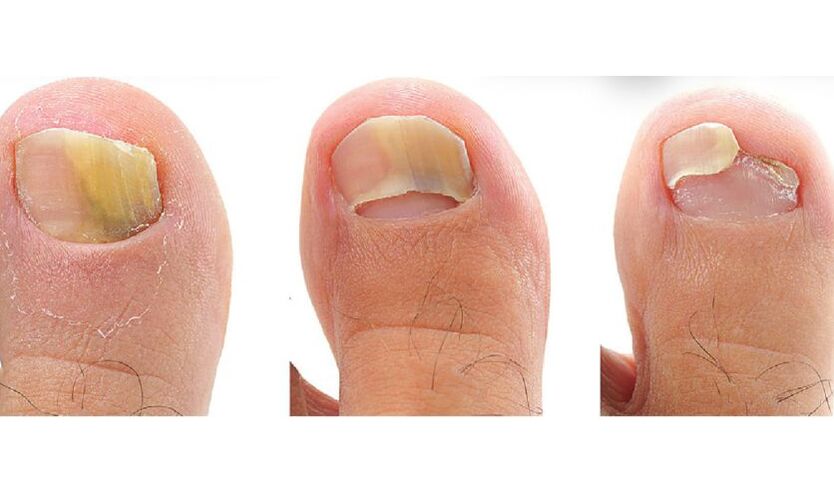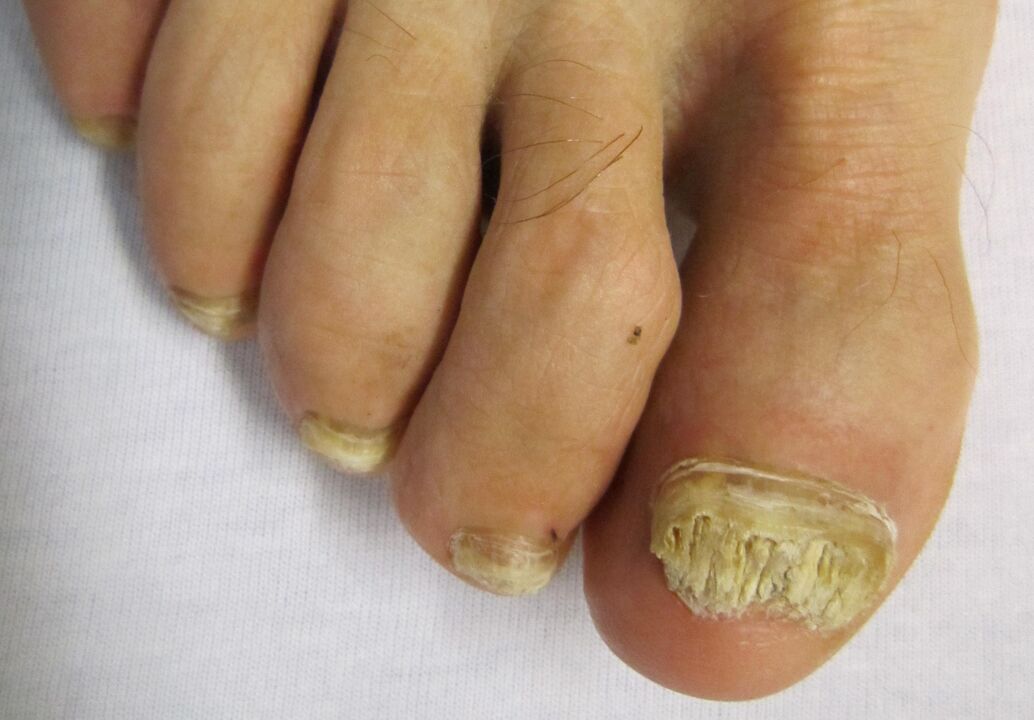Currently, more than 20% of the world's population is infected with fungus on the feet and sometimes on the hands, so many people know how unpleasant this disease is and what consequences it causes. However, not everyone is familiar with the information about which microorganisms cause this disease and what types of nail fungus there are.
In addition to the forms of the disease, its specific characteristics and treatment methods, it would be useful to know how many different types of fungi cause the destruction of nails and damage to different areas of the feet and hands.
Causes and symptoms of the disease
With the causes of the disease, everything can be quite complicated, because a person is easily infected with a fungus due to both the weakness of his body and constant contact with infected people or things.

Currently, the main causes of the disease are the following:
- visiting saunas, showers and public pools;
- Increased sweating of the feet;
- Using someone else's shoes or hygiene products;
- Weak immunity, etc.
Manifestations of the fungus in the affected areas include the following symptoms:
- Formation of scales on the skin of the feet and nails;
- Peeling and itching of the skin;
- Appearance of cracks;
- thickening of infected skin and nails;
- Change in nail color;
- Destruction of the nail structure.
It is important!
In any case, toenail fungus and any other forms of its manifestation cause many problems, and therefore it is worth dealing with the prevention and treatment of the disease in time.
Forms and types of the disease
In this case, everything is quite complicated, because the types of fungal nail diseases are distributed according to different criteria.

The classification is as follows:
- According to the depth of penetration of the fungus and its location;
- According to the size of nail thickening;
- According to the type of pathogen;
- According to the stage of development (early, second, advanced).
If we take the type of pathogens as an example, in this case, the patient will have to learn the names in Latin for a long time, so it is not worth going too deep into unnecessary information with the names, it is better to understand it. explain in detail the manifestations of nail fungus and how all this is reflected in the nail plates.
Classification according to penetration depth and location on the nail
In this case, the forms of the disease are divided into the following points:
- Distal. This type of onychomycosis appears on the extreme part of the nail (free) and is characterized by the beginning of delamination with discoloration and destruction of the structure. Moreover, the spot begins to grow in size;
- Lateral. The main signs are similar to the previous form, but the color of the nail changes on one or both sides of the nail;
- Surface white. This form of the fungus is expressed by the appearance of several spots on the nail, which eventually leads to its complete destruction;
- Proximal. The disease originates from the cuticle (inflammation) and gradually spreads to the entire nail, destroying it;
- General onychomycosis. The color of the entire nail plate changes, which leads to faster destruction.

Classification according to the size of nail thickening
This classification has only 3 forms that allow us to distinguish the levels of compression that a nail infected with fungus has to endure.
In this case:
- Normotrophic form. With this form of the disease, separate foci of the disease appear on the nail, which has a slightly different color. Nail thickness does not change;
- Hypertrophic form. The nail begins to thicken, change color, deform, gradually collapse, and it is not so comfortable for a person to walk anymore;
- Onycholytic. With this form, the nail fungus leads to the separation of the layer from the finger, and if you delay the treatment, if you bring everything to this point, you do not need to think about saving the nail.
Of course, the types of nail fungus are distributed themselves depending on the pathogen. There are three main types of microorganisms, but they have their own species.
Classification according to the type of pathogen
In this case, three types of pathogens can be distinguished, each of which has its own subtype. It should be noted that these microorganisms can also be present on the hands, but this is less likely due to increased hand hygiene.
The distribution looks like this:
- Mold. This is one of the simplest forms of fungi, because the mold cannot penetrate deeply into the affected area. However, manifestations on toenails are still possible. The main symptoms are a color change from black to green. Sometimes spots of the same color can appear on the skin of the fingers. There are more than 5 types of mold;
- Dermatophyte. There are 3 main pathogens that cause more severe symptoms. The appearance of gray and yellow stripes, tearing of the nail and worse, this type of microorganisms can infect the entire foot;
- yeast fungus. This fungus is well known because it belongs to the genus Candida, which is responsible for the development of liver. When infected with such a fungus, the characteristics of the symptoms are a decrease in the thickness of the nail, its color turns gray, separation and damage to the finger up to inflammation.
It should be noted that due to the presence of subspecies, only a specialist will be able to prescribe the right drugs for the fungus, the selection of independent means will simply be useless.
Finally
Some experts identify other forms of the disease by taking into account the manifestations of the disease on the hands, but you can understand what kind of fungus it is by looking at the symptoms that appear, guided by the types known to science.
However, this does not mean that you can treat yourself in this way, because there are other diseases that cause nail discoloration as well as peeling. For this reason, if a fungus suddenly appears on your nails, you should immediately consult a doctor, for example, a dermatologist, and take a comprehensive approach to solving this problem.















